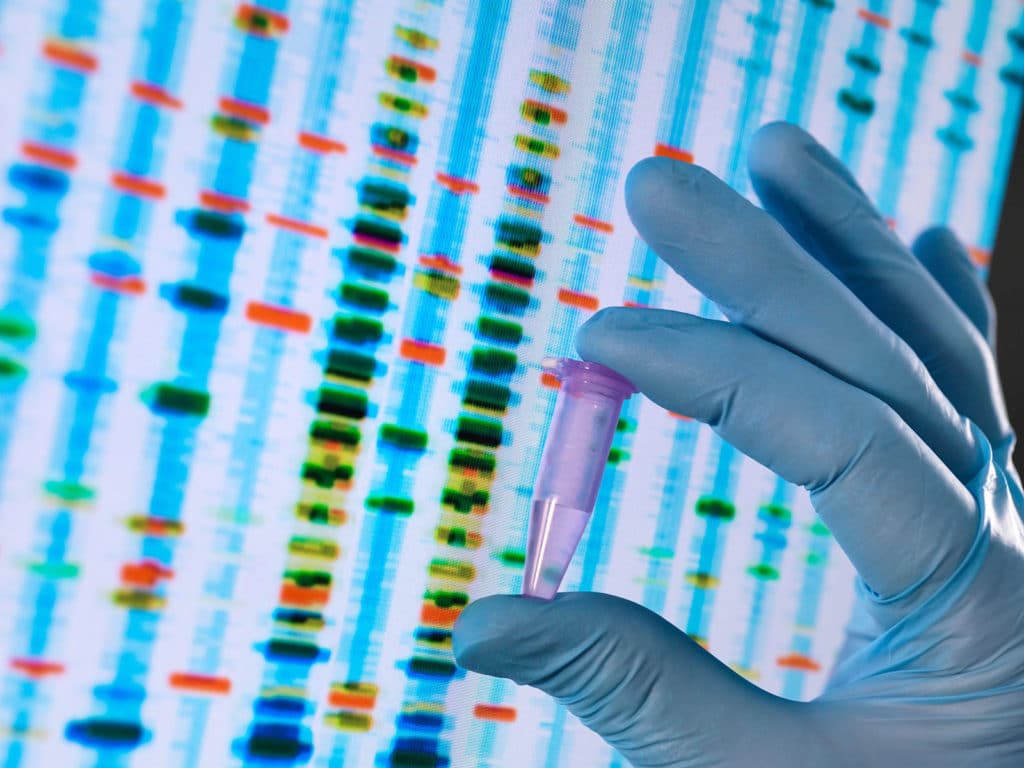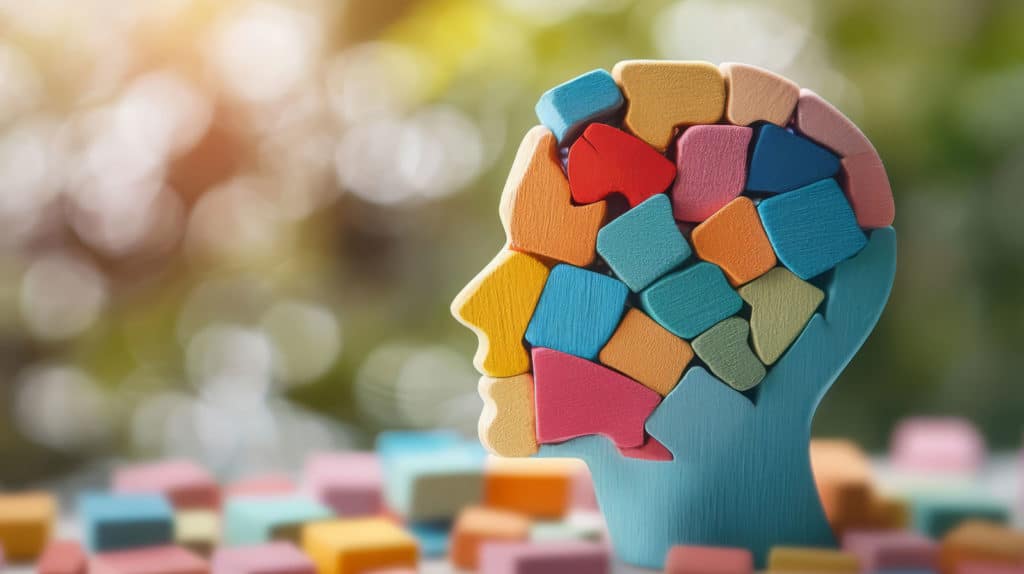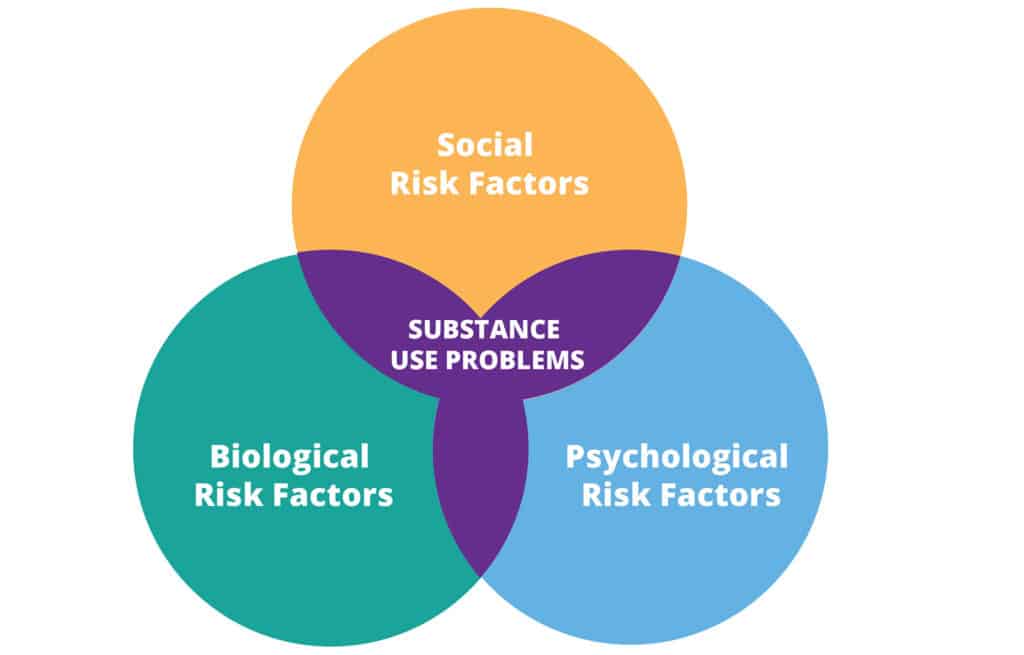Addiction is a result of risk factors that can be categorized into three basic categories: biological, psychological, and social. The biopsychosocial model of addiction explains how these three categories interact to influence a person’s susceptibility to substance use disorders.
This article discusses the nature of addiction through the biopsychosocial model and the factors that contribute to the development of addiction.
Table of Contents
What causes addiction? This is a question that many researchers, healthcare professionals, and individuals struggling with substance abuse have sought to answer.

Before the late 1800s, addiction is thought to be the result of biological and genetic factors. It was commonly believed that some people were simply predisposed to substance dependence due to inherited traits and physical vulnerabilities.
Then, Sigmund Freud came along and argued that addiction was primarily driven by psychological factors.
Although some of his theories were largely criticized for their lack of empirical evidence, Freud’s research on the role of trauma, repressed emotions, and unresolved unconscious conflicts—particularly those stemming from childhood experiences—has influenced much of today’s contemporary therapeutic approaches.
Fast forward to the 1970s when George L. Engel proposed that mental illness and addiction aren’t simply the result of biological and psychological factors but also social factors. This led to the development of the biopsychosocial model, which encompasses three major risk factors: biological, psychological, and social.
The biopsychosocial model explains that addiction is a result of a constellation of factors. Some are universal, such as the way substances affect brain chemistry, leading to dependence and cravings. Others are more individualized, and shaped by a person’s unique social and psychological environment. Let’s take a look at these factors:
Biological Factors

The “bio” in biopsychosocial refers to the biological aspect of addiction. It considers several key biological factors in the treatment of substance use disorder, including:
- Genetic factors that influence the variability of addiction
- Brain chemistry (reward system dysfunction, neurotransmitter imbalances)
- Physical health conditions like chronic pain or mental health disorders
- Brain development through adolescence
Genetic Factors and Brain Chemistry
Although there’s no single gene that definitively identifies a person’s increased risk for addiction, multiple studies have found that addiction does, indeed, have a genetic component.
Individuals with a family history of addiction often have an increased risk due to genes that affect impulse control and reward sensitivity. One condition linked to this increased risk is Reward Deficiency Syndrome (RDS), a polygenic (inherited) neurochemical imbalance characterized by underactive reward pathways.
RDS affects the brain’s ability to experience pleasure and satisfaction from natural rewards such as food, social interactions, and achievements. As a result, people with this condition may seek out drugs or alcohol to artificially stimulate dopamine release in an attempt to compensate for their brain’s deficient reward response.
Physical Health Conditions
Physical health conditions like chronic pain can contribute to addiction from a biological perspective. Chronic pain, for example, often leads to the use of prescription opioids, which can result in physical dependence and addiction.
The same is said for those suffering from neurological disorders, hormonal imbalances, and autoimmune diseases, as they may experience disruptions in brain chemistry that increase their vulnerability to addiction.
Brain Development Through Adolencse
Brain development also plays a crucial role. The brain’s reward system continues to develop throughout adolescence, which explains why teens and young adults are more susceptible to the effects of alcohol and drugs. Early use of these substances negatively impacts brain development, increasing the risk of addiction.
Psychological Factors

The “psycho” in biopsychosocial refers to the psychological factors that contribute to addiction.
Psychology refers to the behavioral processes that control a person’s emotions, moods, motivations, and thought patterns.
It encompasses personality traits (impulsivity and sensation-seeking), psychological constructs (self-worth and self-esteem), mental health concerns (depression and anxiety), and the psychological impact of individual life experiences (sexual abuse and/or trauma).
Mental Health Conditions
People with mental health disorders, particularly anxiety, depression, post-traumatic stress disorder (PTSD), and bipolar disorder, have a higher risk of developing addiction because many turn to substances as a form of self-medication, seeking temporary relief from distressing emotions or intrusive thoughts.
In the same vein, people with low self-esteem, high impulsivity, and heightened stress responses can drive them to turn to drugs or alcohol as a coping mechanism.
Traumatic Experiences
Researchers found that past experiences, especially trauma and adverse childhood experiences (ACEs), impact a person’s psychological vulnerability to addiction. People who have suffered through neglect, abuse, or major life stressors may develop maladaptive coping strategies, increasing their likelihood of substance abuse.
Social Factors

The “social” in biopsychosocial refers to the social and environmental factors that contribute to addiction. Social norms, societal approval, accessibility, cultural beliefs, age, and gender all influence the experience of addiction. Factors that fall into this category include:
- Traumatic childhood experiences, like neglect, sexual/physical abuse, or witnessing violence
- Unstable/negative family dynamics (parental substance use, lack of supervision)
- Peer pressure
- Social normalization and glorification of drug use
- Poverty and financial instability
- High-crime neighborhoods and drug-prevalent communities
- Limited access to quality education and awareness programs
- Workplace stress, job instability, and lack of career opportunities
- Adjustment difficulties due to immigration and settlement
- Lack of social support
Unstable Family Dynamics
Family dynamics are one of the most significant contributors to addiction. People raised in households where substance use is normalized, or where there’s a lack of parental supervision or emotional support, are more likely to develop substance use disorders due to social modeling (learning via observation).
Socioeconomic Status
Socioeconomic status and access to resources affect addiction risk as well. Those struggling with unemployment, instability, or housing insecurity may turn to substances as a means of coping with stress and hardship.
Certain communities, particularly those facing economic hardship, system inequality, and limited resources, tend to have easier or more targeted access to drugs. It may seem counterintuitive but it does make sense when you consider individual factors.
For one, drug dealers specifically target these communities because residents are often easier to exploit due to economic desperation and lack of access to education. There’s also the fact that law enforcement is somewhat stretched thin in these areas, making it easier for drug markets to operate.
Social Normalization
When drug use is prevalent in a community, it can become ingrained in social culture. Young people growing up in these areas may view substance use as a normal or even necessary part of life, increasing their risk of early experimentation and long-term dependency.
Peer Pressure and Easy Access
Young people and college students often have targeted access to drugs due to social environments that normalize experimentation.
Peer pressure, stress, and easy access to substances contribute to higher rates of use. Studies have shown that nearly half of all drug abusers (43%) are between the ages of 19 and 28 years old. Of this, over 18% have used an illicit drug other than marijuana.
What starts as a harmless way to relate to peers can quickly divulge into a full-blown addiction, especially if the person using struggles with the stress of school work and expectations.
The biopsychosocial model acknowledges that addiction is a multifaceted disorder that requires a multifaceted conceptualization. Rather than addressing a single risk, it touches on all the possible factors that led to a person’s addiction.
Professionals may use tests to check for cognitive issues and deficits caused by substance use, as well as neuroimaging techniques like PET or MRI scans to identify brain abnormalities associated with the addiction.
Next, they may look into a patient’s mental health condition, trauma history, thought patterns, and behavioral triggers. And to identify environmental and interpersonal factors, they may look into the patient’s family relationships and home environment, peer influences and social networks, housing situation, and financial stability.
All this creates a “case” for the patient that a professional can use for treatment.

Here’s what a treatment plan may look like:
Biological Treatment Approaches
- Medication-assisted treatment (MAT) (methadone, buprenorphine, naltrexone)
- Medical detoxification to manage withdrawal symptoms safely
- Treatment for co-occurring physical health conditions (chronic pain, neurological disorders)
- Nutritional support and physical health rehabilitation
Psychological Treatment Approaches
- Cognitive-behavioral therapy (CBT) to change harmful thought patterns
- Dialectical behavior therapy (DBT) for emotional regulation and coping skills
- Trauma-informed therapy for individuals with past abuse or PTSD
- Mindfulness and stress-reduction techniques (meditation, yoga)
Social Treatment Approaches
- Support groups and peer recovery programs (Alcoholics Anonymous, SMART Recovery)
- Family therapy and relationship counseling
- Social skills training
Final Thoughts
As the name suggests, the biopsychosocial model of addiction addresses three major contributing factors of addiction: biology, psychology, and social influences.
Biology includes genetics, brain chemistry, and physical health. Psychology involves mental health and coping skills, while social factors include relationships, environment, and life circumstances.
If you or a loved one is struggling with addiction, we’re here to help. Our treatments take a holistic approach that considers all three factors to ensure lasting care and recovery.



